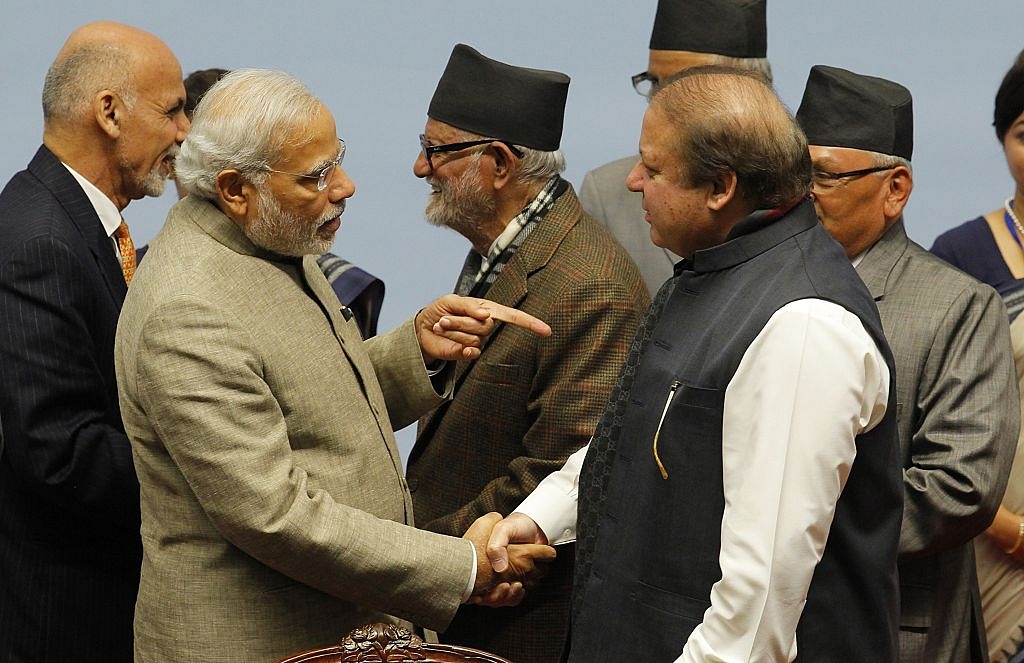Insta
India Hints At Revisiting Indus Waters Treaty As Retaliation Against Pak Perfidy At Uri

Prime Minister Narendra Modi with Pak PM Nawaz Sharif (NIRANJAN SHRESTHA/AFP/Getty Images)
India has sent out strong hints that it plans to revisit the Indus Waters Treaty as its answer to Pakistan sponsoring terrorism and terrorists. External Affairs spokesperson Vikas Swarup said on Thursday:
“There are differences on the treaty. For any such treaty to work, it is important there must be mutual trust and cooperation. It can’t be a one-sided affair.”
The treaty is very generous towards Pakistan, which has been showing its gratitude to India’s munificence by launching terror attacks . The treaty, brokered by the World Bank in 1960, is one of the world’s most lopsided and inequitable water pacts and gives Pakistan much more than it deserves as a lower riparian state.
As strategic affairs expert Brahma Chellaney exhorts in this recent article, Pakistan can be easily and effectively punished by India through abrogating the treaty on its own. There is nothing that stops India from doing so. India must tell Pakistan, suggests Chellaney, that the continuation of the treaty will depend on Pakistan’s good behaviour towards India.
The unjust treaty gives control to India over just three rivers -Beas, Ravi and Sutlej- that flow through Punjab before entering Pakistan. Pakistan has control over Indus, Chenab and Jhelum that flow from Jammu & Kashmir before entering Pakistan. All the rivers originate in India and this is the only treaty in the world that gives complete rights on the flow of rivers that originate in an upper riparian state (India) to a lower riparian state (Pakistan). Jammu & Kashmir has long been demanding a review of the treaty as it robs the state of its rights to use the water of its own rivers.
Support Swarajya's 50 Ground Reports Project & Sponsor A Story
Every general election Swarajya does a 50 ground reports project.
Aimed only at serious readers and those who appreciate the nuances of political undercurrents, the project provides a sense of India's electoral landscape. As you know, these reports are produced after considerable investment of travel, time and effort on the ground.
This time too we've kicked off the project in style and have covered over 30 constituencies already. If you're someone who appreciates such work and have enjoyed our coverage please consider sponsoring a ground report for just Rs 2999 to Rs 19,999 - it goes a long way in helping us produce more quality reportage.
You can also back this project by becoming a subscriber for as little as Rs 999 - so do click on this links and choose a plan that suits you and back us.
Click below to contribute.
Latest